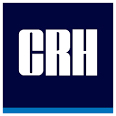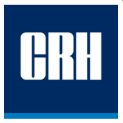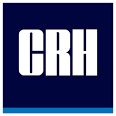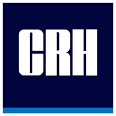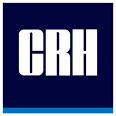Title Page
-
Company
-
Date
-
Prepared by
-
Other Person(s) Present During the Audit
-
Location
Risk Assessment
-
a) Documented Risk Assessment Policy in place and accessible to all employees
-
b) Risk Assessment Process addresses non-routine tasks and construction work carried out by all employees including contractors, temporary employees and off site delivery procedures.
-
c) Each company should have a process in place to evaluate and document "Risk That Kill" or other identified high hazard activities.
-
d) Specific Risk Assesssment Process for off-site delivery (if applicable)
-
e) Weekly toolbox talks / safety topics discussed and a copy of this documentation kept at your site/local office
-
f) Site safety briefings conducted and documented with contractors when they arrive at facility
-
g) Temporary personnel training is provided commensurate with the risks and this training is documented
-
h) AMAT Contractor Checklist is being fully utilized to determine contractor qualifications
-
i) Does the company have a process in place to evaluate "Risks that Kill"?
-
j) Diesel fuel or gasoline IS NOT allowed to be used for any cleaning purposes at any time.
-
k) Are tanks properly labeled?
-
l) Are fire extinguishers inspected regularly with an current annual inspection?
-
m) Are first aid kits stocked with current products?
-
n) Risk tolerance factors training has been conducted.
-
o) Employees are trained and understand that 50 pounds is the maximum weight of any object that one employee should attempt to lift manually by themselves.
-
p) Safety Data Sheets (for our products) are provided to the customer.
-
Risk Assessment - overall review
-
Additional comments / notes
Equipment Safety
-
Pedestrian / Vehicle Segregation measures have been implemented at this Site / Facility and it is adequately signed to provide direction regarding pedestrian walkways, traffic patterns, parking areas, prohibited conduct, etc.
-
Are visitors and employees observed following the VPS plan?
-
Seat belt usage
Facility
-
Do you have the following at your facility:
-
a) Sign indicating where mobile phones are allowed or not allowed?
-
b) Sign prohibiting trucks from either entering or leaving the facility overloaded?
-
c) Sign(s) indicating vehicle travel routes, designated parking areas, pedestrian crossings, etc?
-
d) Sign indicating speed limit are posted near the entrance to the property?
-
e) If an asphalt plant, is a sign posted listing the req'd PPE during the loading/offloading of liquid asphalt cement?
-
f) If an asphalt plant, is a sign in place to warn of H2S hazards and are measures in place to protect against it?
Mobile Equipment:
-
a) All equipment operators are adequately task trained prior to operating mobile equipment?
-
b) Daily or pre-use inspections are documented on all equipment and off road vehicles prior to use?
-
c) Powered industrial truck (lift truck / forklift / moffett) operator training is current for all qualified operators? Trained in accordance with OSHA 1910.178 prior to operation of a forklift and at least once every 3 years?
-
d) All vehicle/equipment lights are working properly?
-
e) Are "flexible steps" on equipment sturdy/durable?
-
f) Seat belts are not expired and current with manufacturers recommendations.
-
g) Man lift baskets are not used on forklift. (Unless manufacturer of forklift and basket are compatible and within load limits)
Company Vehicles
-
Company Vehicles
-
a) All drivers are trained in company safe driving program (i.e. Smith System) before they drive and at least annually?
-
b) Motor vehicle records (MVR's) are reviewed prior to a new employee driving and at least annually?
-
c) Do drivers have a current proof of insurance card and vehicle registration?
-
d) Company Minimum Driver Qualification Policy is in place (CRH or more strength than policy)
DOT regulated vehicles
-
DOT regulated vehicles (Below are federal regulations which most states have adopted. Check to ensure that these are applicable in the State(s) of the audit.)
-
a) Daily or post trip inspections are documented on all DOT regulated vehicles (>10,000lbs)?
-
b) If over 10,001, drivers have a current medical card and annual inspection?
-
c) If over 26,001, is fire extinguisher charged with a current annual inspection?
-
Is the CRH Tire Policy being adhered to?
-
Have you observed that seat belts are used by all contractors and operators, drivers and passengers of company vehicles and equipment?
-
Are keys removed from vehicles/equipment?
-
3-point of contact decal is in place on steps on equipment?
-
All back up alarms are working?
-
At MSHA regulated facilities, are equipment/vehicle tires chocked when not in use?
-
Ramps are of adequate height and edges are adequately protected?
-
Company drivers have been trained in tie down / load securement requirements for the loads they carry, as applicable.
-
Employees understand and comply with mobile phone policy?
-
Company drivers know where to find and/or how to determine the maximum weight of the vehicles they operate, as applicable, and maximum weights are strictly complied with?
-
Can the Plant Operator demonstrate that trucks cannot be overloaded?
-
Do you periodically check vehicle weights to ensure that loads are within vehicle weight limits (AMAT operated vehicles)
Summary
-
Mobile Plant Safety - overall review
-
Additional comments / notes
Isolation of Operating Machinery and Electrical Saefty
-
a) CRH lock-out/tag-out policy in place. Posted or accessible to all employees.
-
b) Machine specific lock-out/tag-out procedures or isolation rules in place. Accessible to all employees.
-
c) Sufficient numbers of locks, tags, hasps, etc on site to conduct all anticipated maintenance activities. Accessible to all authorized employees.
-
d) All employees must be trained in the CRH policy and all authorized employees have been trained in the lock-out/tag-out isolation and this training documented?
-
e) A list of Close Proximity Maintenance (CPM) procedures specific to your facility has been created, as applicable?
-
f) If CPM is used, a Job Safety Analysis (JSA) has been created outlining the planned step by step procedure?
-
g) Switches cannot be locked out in the "on" position.
-
h) Each piece of mobile equipment has a written Lock Out/Tag Out procedure in place.
-
I) All authorized employees are observed at least annually by a competent person who watches them conduct a task involving lock out/tag out to ensure that the system is isolated per specific procedures, and this is documented.
Electrical Safety - NFPA 70E
-
a) Has an arc flash survey been completed by a qualified person for this facility? Have electrical labels warning of arc flash (and containing all other required information) been installed on electrical enclosures, as applicable?
-
b) All work over 600 volts is performed by a third party certified electrical contractor?
-
c) Prior to working, all electrical contractors provide a letter of certification confirming that the attending electrician(s) are properly trained (NFPA 70E) to work around the respective voltage?
-
d) All employees who troubleshoot electrical systems, perform voltage testing, operate circuit breakers with covers off or are otherwise exposed to live or potentially live circuits have been trained in NFPA 70E?
-
e) All qualified and/or affected employees wear appropriate arc rated PPE during electrical tasks?
-
f) All Authorized employees and contractors who work on electrical equipment perform lock-out / tag-out on the energy source AND verify disconnection through the use of a voltage testing?
-
g) All electrically authorized employees have or have access to a voltage tester for verification of electrical LOTO
LOTO Annual Integrity
-
a) All LOTO authorized employees are observed at least annually by a competent person who watches them conduct a task involving lock-out/tag-out or isolation to ensure that the system is operated as per rules, and this is documented.
-
b) Have all machine specific procedures been inspected at least annually for correctness and to ensure equipment additions and changes have been implemented? This inspection is documented? The goal is to ensure that the component and energy specific procedures are correct and provide adequate protection and information.
-
c) Arc flash gloves have current certification?
-
d) Arc flash gear is appropriate for the voltage exposure?
-
e) Are component specific procedures for mobile equipment in place?
-
LOTO Annual Integrity - overall review
-
Additional comments / notes
Machinery Guarding
-
a) System for regular checking of machinery guarding in place.
-
b) Are tail pulleys, exposed shafts, pinch points and other moving parts sufficiently guarded?
-
c) Are pad-mounted electrical transformers and propane tanks away from travel-ways and adequately protected by bollard, barrier or other measures so they cannot be struck by trucks and/or mobile equipment?
-
d) Are conveyor return rollers within 7 feet of the ground (or an adjacent working surface) guarded? Generally return rollers should be guarded when employees are exposed to injury during work or travel activities. For instance, when cleaning or working under, or crossing under an operating belt conveyor that is not guarded by location.
-
e) Are guards secured in a way that a tool is required to remove them
Confined Space Entry
-
a) Documented confined space entry policy accessible to all employees.
-
b) Documented entry procedures for each confined space area.
-
c) All employees who may perform duties as confined space entrants, attendants or supervisors have been trained in the confined space program and all applicable entry procedures and this is documented
-
d) Are confined space procedures used for excavations whenever exposure to a hazardous atmosphere could exist? An example would be an internal combustion engine near the top of the excavation used for dewatering.
-
e) Are permits used for entry into baghouses, cold feed bins, mixer drums, tanks, silos, etc?
-
f) All permit required confined spaces have signs posted at the entryway indicating "permit required confined space"?
-
g) Completed or canceled permits are retained for at least 1 year?
-
h) Calibration gas bottle is current (not expired)?
-
i) Confined space air tester is available and used for all permit confined space entries?
-
j) Confined space air tester is calibrated in accordance with the manufacturer's information?
-
Confined Space Entry - overall review
-
Additional comments / notes
Working at Heights
-
a) Documented Fall Protection policy in place and posted or accessible to all employees.
-
b) All employees who may work at heights have been trained in the fall protection policy as well as all applicable means and methods for preventing falls at their location and this training documented.
-
c) A fall hazard risk assessment is conducted whenever employees are exposed to non-routine fall hazards and require fall protection beyond what is outlined in the fall protection policy?
-
d) Employees are aware of the various tools and devices that can be used to help them achieve 100% fall protection such as retractable lanyards, beam straps, double lanyards, etc. and such devices are available?
-
e) A "ladders Last" approach should always be applied.
-
f) All ladders have a visible capacity rating?
-
g) Fall harnesses/lanyards inspections are conducted as per manufacturer specifications and documented as required?
-
h) All ladders are in good shape and being used appropriately?
-
i) 3 Point Contact stickers or signs are positioned at the ladderways or access points of all plants and mobile equipment
-
Working at Heights - overall review
-
Additional comments / notes
Lifting Operations
-
a) Operators of Cranes >2,000 lbs capacity have received training from an outside third party (i.e. truck mounted cranes, overhead and gantry cranes, etc.) including rigging and lifting training.
-
b) Operators of Hoists of any capacity have received training from a competent person in the use of the specific device as well as rigging and lifting training?
-
c) Operators of loaders and excavators, where buckets are used for lifting, have received training in rigging and lifting.
-
d) Are employees trained and understand that 50 lbs is the maximum weight of any object that one employee should attempt to lift manually by themselves. Heavier objects require lifting by mechanical means or with assistance. Tasks which require >50 lb objects to be lifted by one person should be reviewed and, if possible, redesigned.
-
e) All cranes greater than 2,000 lbs capacity are inspected annually by a qualified outside third party.
-
f) Lifting equipment and hoists of any capacity are inspected on at least an annual basis by a competent person.
-
g) All lifting equipment, hoists and cranes have their safe working load limit identified on the lifting device
-
h) All lifting implements such as straps, cables and chains have their load limit identified, as applicable.
-
i) All employees know to never use chains to pull out stuck trucks or equipment (i.e. stuck in the mud). Tow ropes, recovery straps or other devices of sufficient strength designed for this purpose should be used - NEVER Chains.
-
j) If chains are used for lifting, they are visually inspected before each use and then monthly with a documented inspection record which includes the date of the inspection, the signature of the person who performed the inspection and an identity of the chain which was inspected.
-
Lifting Operations - overall review
-
Additional comments / notes
Underground and Overhead Utility Dangers
-
a) Documented policy and/or risk assessment for underground and overhead work in place.
-
b) A site survey for utility lines is always conducted and documented before underground work is carried out on-project or facility sites
-
c) All employees and operators are aware to stay at least 10 feet away from power lines. As such, spotters are used in situations where power lines are nearby to observe and warn operators to stay at least 10 feet away.
-
Underground and Overhead Utility Dangers - overall review
-
Additional comments / notes
Use of Personal Protective Equipment (PPE)
-
a) Documented Personal Protective Equipment (PPE) Policy in place for all areas of operation/tasks.
-
b) No employee is permitted to work without the required PPE.
-
c) Do you inform contractors of our PPE requirements and do you periodically observe that they are wearing it.
-
d) Are daily visual inspections of PPE are carried out by employees at your facility/location prior to use.
-
e) If the exposure to live or potentially live electrical conductors exists, then NFPA 70E compliant PPE is made available and used.
-
f) If an asphalt plant: PPE is available and used per policy for exposure to hot liquid asphalt cement during line breaking, line connecting, sampling, loading and offloading activities, etc. (both employees and contractors)
-
g) If an asphalt plant: All affected employees understand and adhere to the AMAT Guidance and Control Strategies regarding Hydrogen Sulfide (H2S) exposure? (as outlined in the Reference Bulletin)
-
h) If respirators are required to be used (other than dust masks worn on a voluntary basis) employees are medically qualified, trained and fit tested for respirator use.
-
i) If dust masks are worn by employees on a voluntary basis, Appendix D is signed by employee.
-
j) Arc flash gear is currently certified (gloves) and apparel matches exposure.
-
k) Employees are wearing class III vest in areas exposed to equipment or vehicle traffic.
-
Use of Personal Protective Equipment (PPE) - overall review
-
Additional comments / notes
Safety of Materials Under Pressure
-
a) Facility compressed air systems are inspected / checked periodically by a qualified third party inspector and have current certifications.
-
b) Regular documented checks of pressure relief systems on pressurized conveying systems are conducted by a competent person at your facility / location, as applicable.
-
c) Compressed gas tanks are separated and stored properly.
-
d) Are employees aware that compressed air should not be used for cleaning personnel or clothing, and that compressed air used for cleaning other surfaces or objects must be regulated down to less than 30 psi.
-
e) All employees who work with pressurized systems have been trained in the proper usage of that system and the training documented.
-
Conveyance and Storage of Materials under Pressure - overall review
-
Additional comments / notes
-
Pressurize systems should be fitted with proper relief system including monthly check valve inspection.
Blasting Operations (if applicable)
-
a) Documented "Safe Blast Policy" in place.
-
b) Contractors have signed acknowledgement stating that they have received the AMAT Blasting Policy
-
c) Employees have received site-specific training of blasting rules.
-
d) Pre-blast reviews are being conducted/documented.
-
e) All personnel involved in blasting operations have documented and blasting awareness training
-
f) Blasting records are kept on site and operating records of all blasts are maintained.
-
Blasting Operations (if applicable)- overall review
-
Additional comments / notes
Employee Engagement
-
a) Employees are involved in a Safety Leadership Team (SLT), Safety Committee, Employee Workgroup or similar effort where problem solving is performed through employee ideas and input?
-
b) Employee engagement efforts such as near miss reporting, behavior observations, leading training, mentoring others, etc, are robust.
-
c) 5S program should be robust with all five elements and place
-
Employee Operations - overall review
-
Additional comments / notes
Work Zone Safety
-
a) All road crews have knowledge of and understand the CRH Backer Spotter policy.
-
b) Maintenance of Equipment (MOT) personnel and flaggers have been trained according to their duties.
-
c) All equipment is outfitted with sufficient retro-reflective tape to be seen at night and the tape is clean and in working order.
-
d) A copy of the most current MUTCD/state/local/project specific traffic control standards are immediately available for review on all projects.
-
e) All equipment operating in a work zone is equipment with flashing lights as applicable.
-
f) All work zone traffic control is inspected and documented by a competent person.
-
g) All work zone employees have received workzone awareness training.
-
h) All reverse systems, echo location systems, back-up alarms, including those of contractors, are working properly.
-
i) Work zone employees are familiar with the Work Zone Intrusion Prevention Manual.
-
j) An ITCP has been created and is being used to control internal movement.
-
k) Employees are aware of the 10-foot rule when working around equipment and the 20-foot rule for safe distance from roller to paver.
-
Workzone Safety - overall review
-
Additional comments / notes
Contractor Safety Mangagement
-
All contractors have been evaluated using a contractor safety management guide/checklist?
-
All employees of contractors have been included in daily safety huddles (T5) and risk assessments?
-
Contractors on this project/site received safety induction prior to staring project?
-
Are daily reviews and inspections of subcontractors being completed and documented?
-
Are contractors been informed to follow all PPE requirements?
Completion
-
Inspected by:
